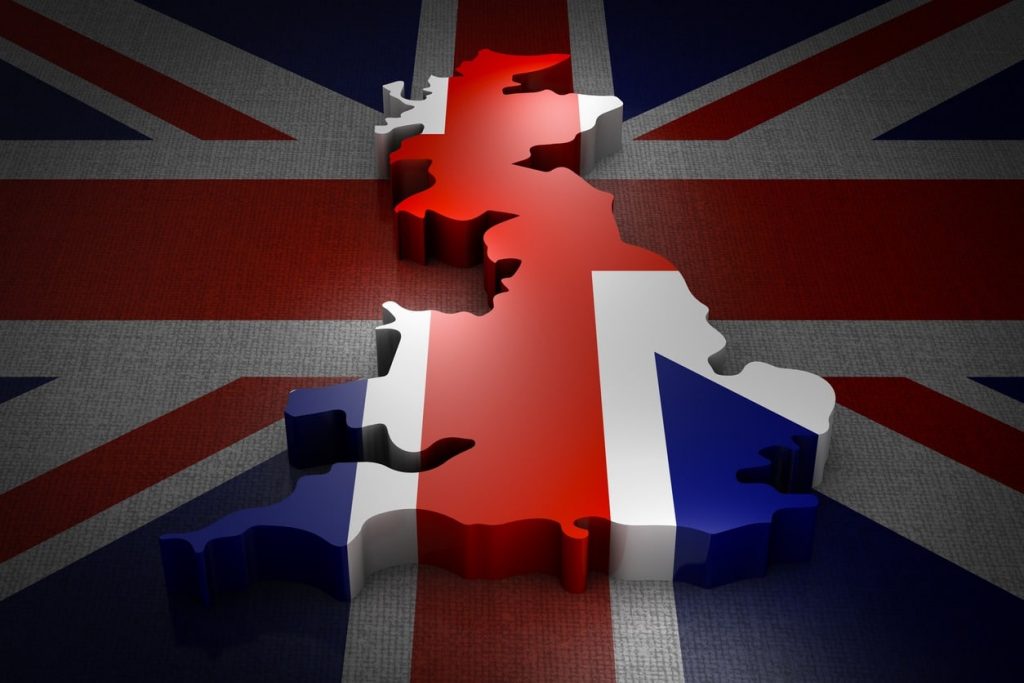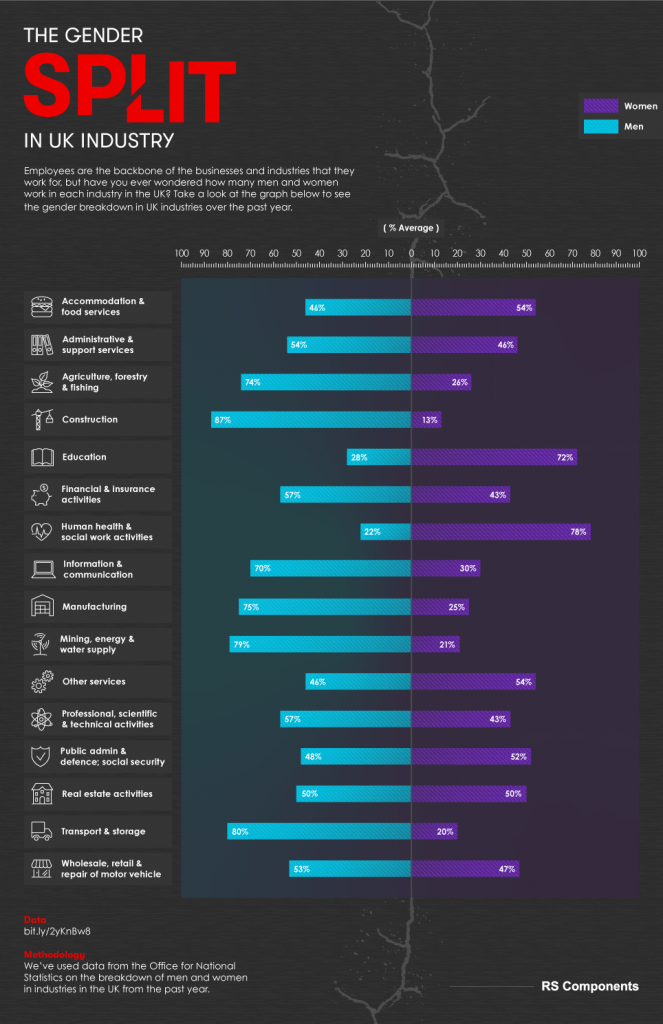In the United States and abroad, gender equality has been a particular focus of political and public discussion in recent years as increasing efforts have been made to try and address and analyze why certain jobs and industries still have such imbalances between the number of male and female employees.
Across the pond in the United Kingdom, this has included work aimed at getting more women into the workplace, to end inequalities and unfairness in pay between men and women, and to close the gap between the genders in what jobs are being done.
The graphic below, from RS Components, sets out the progress that has been made in accomplishing the latter goal in the UK, showing the gap between men and women in a wide range of different industries – including those that are traditionally perceived to be for one gender or the other – to establish whether UK employment statistics are any closer to being gender equal. It makes for fascinating reading and shows that much work remains to be done.
Gender differences in some fields continue to be incredibly entrenched, such as in construction where men continue to represent 87% of those employed in the industry, compared to just 13% being women.
Similarly, those working in transport and storage are 80% male and 20% female, and 79% of those working in mining, energy, and water supply are men. These are all areas which were traditionally thought to be work for men and it seems that the perception, and the reality, has not really shifted.
On the flip side, many industries historically perceived as work for women continue to be dominated by women, such as health and social work where employees are just over 3.5 times more likely to be women than men. Interestingly though, while many industries seem to be predominantly male, there is just one industry that is female-dominated, and that is education, where 72% of employees are women. This indicates that while traditionally female jobs are still skewed that way, the domination is not as entrenched as in those male commanded industries.
 Not every industry is heavily tilted though:
Not every industry is heavily tilted though:
- real estate has a perfect 50/50 balance between men and women;
- accommodation and food services – a conventionally female area of the economy – is only 54% to 46% in favor of women;
- administrative and support services are also fairly balanced, with 54% of the workforce being male.
Overall, the figures make for fascinating reading and suggest that, while there is still work to do in many fields, there has been much progress in others.
As more countries, including the United States and UK, continue to grapple with how to best address the differences in how male and female employees are hired, paid, and promoted, it will be important to look to what has (and what has not) worked internationally to help level employment playing fields across industries.

